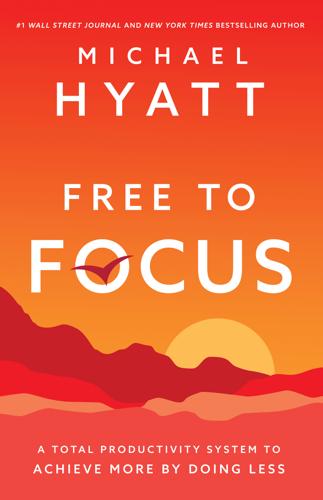
Free to Focus: A Total Productivity System to Achieve More by Doing Less
by
Michael Hyatt
Published 8 Apr 2019
It won’t happen overnight, but this is the goal—spending most of your time focused on Desire Zone activities. There’s only one reason to delegate something in this zone, and that’s if your Desire Zone still has more tasks than you can reasonably do yourself. Believe it or not, it’s possible to stay in your Desire Zone but still work yourself to death. In fact, it’s a real temptation for high-achievers. If you get to this point, you’ll need to examine every task and try to figure out which ones you’re most passionate about and which ones you’re most proficient at. This could lead you to some hard choices about delegating things you love to do.
…
Michael Blanding, “National Health Costs Could Decrease If Managers Reduce Work Stress,” Harvard Business School Working Knowledge, January 26, 2015, https://hbswk.hbs.edu/item/national-health-costs-could-decrease-if-managers-reduce-work-stress. 10. Chris Weller, “Japan Is Facing a ‘Death by Overwork’ Problem,” Business Insider, October 18, 2017, http://www.businessinsider.com/what-is-karoshi-japanese-word-for-death-by-overwork-2017-10. Jake Adelstein, who has worked in Japanese media, said 80-to-100-hour weeks are routine: “Japan Is Literally Working Itself to Death: How Can It Stop?” Forbes, October 30, 2017, https://www.forbes.com/sites/adelsteinjake/2017/10/30/japan-is-literally-working-itselfto-death-how-can-it-stop. 11.
…
They identified low pay, long hours, and heavy workloads as the three biggest contributors.7 Unsurprisingly, a recent Global Benefits Attitudes Survey of workers found stressed employees have significantly higher absentee and lower productivity rates than their happier, healthier peers.8 Most sobering of all, researchers say workplace stress factors in at least 120,000 deaths per year in the US alone.9 During the 1970s in Japan the problem was so acute, they coined a word for it: karoshi, “death by overwork.”10 Clearly, if our goal in increasing productivity is to achieve some vague notion of “success,” we aren’t doing it right. Sick, dead, or dying doesn’t sound successful to me. We aren’t robots. We need time off, rest, time with family, leisure, play, and exercise. We need big chunks of time when we aren’t thinking about work at all, when it’s not even on our radar.
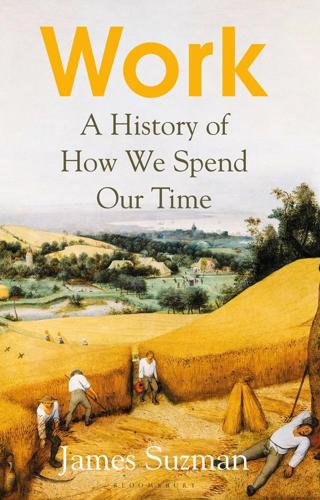
Work: A History of How We Spend Our Time
by
James Suzman
Published 2 Sep 2020
The convergence of the modern pursuit of riches with a Confucian ethic of responsibility, loyalty and honour may account for the high numbers of deaths by overwork in cities like Seoul, Shanghai and Tokyo, but death by overwork is not a phenomenon that is unique to late twentieth- and early twenty-first-century South East Asia. Indeed, what is perhaps unique about the Confucian belt economies in this respect is not that death by overwork is more common there than anywhere else, but the fact that people there are more willing to engage with it as a problem. In Western Europe and North America, deaths by overwork are usually attributed to individual failings rather than the actions or failings of an employer or their government.
…
Her beat was local government and on 24 July 2013, while covering the metropolitan elections in Tokyo, she died in the line of duty and her body was found with her mobile phone still clasped in her hand. Doctors soon established that Miwa Sado died as a result of congenital heart failure. But following an investigation by Japan’s Ministry of Labour, the official cause of her death was changed to ‘karoshi’: death by overwork. In the month preceding her death, Sado had clocked an exhausting 159 hours of official overtime. That was equivalent to working two full eight-hour shifts every weekday over a four-week period. Unofficially, the number of hours of overtime probably exceeded that. In the weeks following her death, her grieving father trawled through her phone and computer records.
…
In the weeks following her death, her grieving father trawled through her phone and computer records. He calculated that she had worked at least 209 hours of overtime in the month preceding her death. Sado’s death was one among many similar reported that year. The Japanese Ministry of Labour officially recognises two categories of death as a direct consequence of overworking. Karoshi describes such a death as a result of cardiac illness attributable to exhaustion, lack of sleep, poor nutrition and lack of exercise, as in Sado’s case. Karo jisatsu describes when an employee takes their own life as a result of the mental stresses arising from overworking.
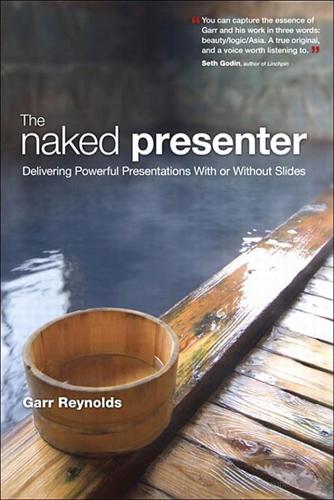
The Naked Presenter: Delivering Powerful Presentations With or Without Slides
by
Garr Reynolds
Published 29 Jan 2010
Three days later, when I asked other students to recall the most salient points of the presentation, what they remembered most vividly was not the labor laws, the principles, and changes in the labor market in Japan. Rather, they remembered the topic of karoshi (literally, “death by overwork”) and the issue of suicides in Japan—topics that were quite minor points in the hour-long presentation. About five minutes of the hour-long presentation was spent on karoshi, but that’s what the audience remembered most. It’s easy to understand why. The issue of death-from-overwork and the relatively high number of suicides are extremely emotional topics that are not often discussed. The presenters cited actual cases and told stories of people who died as a result of karoshi.
…
eBook <WoweBook.Com> making call for action, 172 making sticky, 163–166 on powerful note, 167–169, 172, 181 cognitive overload, avoiding, 37 Collins, Phil, 115 Comedian, 136 comedians, stand-up, 136 communication enhancing, 5 face-to-face, 17–18 removing barriers to, 16 communication experts, 7 computers getting away from, 32 using in presentations, 117 conclusion, beginning with, 167 confidence gaining, 88– 91 necessity of, 125 conflict, including in stories, 44 Confucius, 144 Connection, role in three Cs, 193 contrasts, compelling nature of, 44–45 Contribution, role in three Cs, 193 conversation versus performance, 11–12 conversational language, 147 core points identifying, 50 summarizing in ending, 168 Craft, Chris, 36– 37 The Craft of Scientific Presentations, 40 critical incidents, using, 158 Cs of presenting with impact, 193– 195, 197 D “Deadliest Catch,” 79 death by overwork (karoshi), 47 Decker, Bert, 7, 80–81 deep or wide, 40 defensiveness, avoiding, 177 deGrasse Tyson, Neil, 16, 145 demos, performing, 117–118 depth vs. scope (illustration), 41 design thinking, 24 differences, compelling nature of, 44–45 discussion groups, using for participation, 157 distractions, removing, 49 dojo, lessons from, 190–191 Duarte, Nancy, 7, 34, 164 E Earth Wind & Fire, 103 eat only until 80 percent full (Hara Hachi Bu), 22, 143 ECS (emotionally competent stimulus), 138 education as entertainment, 129– 130 self-, 192 Eisler, Barry, 91 emotional contagion, power of, 109– 110 emotionally competent stimulus (ECS), 138 emotions, 131.
…
See also visuals imagination, stimulating, 158 “impatient optimists,” 188 improvement, 188 improvisation, leaving room for, 121 information determining amount of, 40 sharing via stories, 47 interested vs. interesting, 105 international audience, speaking to, 170–171 interruptions, avoiding during preparation, 30–31 interviews for jobs, expressing true self in, 77–79 J Japanese bath (ofuro), 5, 20–23 Japanese forest, seven lessons from, 70–73 Japanese hot springs (onsen), 5– 6 jazz, comparing to presentations, 8– 9, 11, 121 job interviews, expressing true self in, 77–79 Jobs, Steve, 75, 117, 139, 148–151 jounetsu (passion), 100 judo (the way of gentleness), 190 The Naked Presenter Wow! eBook <WoweBook.Com> K N kaizen (continuous improvement, 72 Kanji, 100 karoshi (death by overwork), 47 Kashima Shin School, 124 Kawasaki, Guy, 81 Keynote technology, 9 keynote, presentation tips from, 148– 151. See also presentations Ki (life force), 176 Kodo: Ancient Ways, 71 Nakamura, Masa, 112 naked approach, explained, 10 naked relationship, (hadaka no tsukiai), 5– 6 natural delivery, 25 natural expression of self, 13–14 naturalness, 6 of childhood, 195 speaking with, 7–8 nature Japanese affection for, 6–7 learning from, 6 negatives, overcoming in stories, 44 Negroponte, Nicholas, 129–130 nervousness, avoiding mention of, 74 Newman, Paul, 76–77 notes overcoming dependence on, 15–16 using, 54 Novel aspect of PUNCH, 66– 67 numbers, interpreting, 150, 153 L lavalier mic, considering, 86–87 learning by doing, 144– 145 process of, 72, 111 role of play in, 123 lectern, presenting from, 116 life force (ki), 176 Life in Three Easy Lessons, 176 lifelong learning (shogai gakushu), 186 lights, leaving on, 88 Lusensky, Jakob, 85 M Made to Stick: Why Some Ideas Survive and Others Die, 164 Marsalis, Wynton, 8, 11 martial way (budo), 124 masks, removing, 21 material, knowing, 121 Maui photo of girl, 122–123 Road to Hana, 48 warning sign, 48 McKee, Robert, 43–44, 46 Medina, John, 32, 40, 108, 137–138 memory and emotions, 108 microphone, considering, 86 Mifune, Kyuzo, 190–191 mirror neurons, 110–112 mistakes, overcoming, 119 Miwa, Yoshida, 112 monotone, impact on speeches, 139 Monta Method, 157 Moon, Richard, 176 moving audiences, 34 moving with purpose, 83– 84 multitasking myth, 32 O ofuro (Japanese bath), 5, 20–23 onsen (Japanese hot springs), 5– 6 O-sensei (great teacher), 175 outline, introducing, 75 outside onsen (roten-buro), 21 P pace attention and need for change, 137–138 changing, 140–143 changing for speaking, 159 varying, 136–140 varying in keynotes, 151 participation, 144 asking for volunteers, 156 asking questions, 152 audience activity, 144– 145 building with hands, 156 conducting brainstorming activities, 155 discussion groups, 157 encouraging, 152, 154– 159 showing visuals, 154 sketching ideas, 156 stimulating imaginations, 158 Index 203 Wow!

Cashing Out: Win the Wealth Game by Walking Away
by
Julien Saunders
and
Kiersten Saunders
Published 13 Jun 2022
BACK TO NOTE REFERENCE 5 Sean Braswell, “President Eisenhower’s $14 Billion Heart Attack,” OZY, April 12, 2016, www.ozy.com/true-and-stories/president-eisenhowers-14-billion-heart-attack/65157. BACK TO NOTE REFERENCE 6 Chris Weller, “Japan Is Facing a ‘Death by Overwork’ Problem—Here’s What It’s All About,” Business Insider, Oct. 18, 2017, www.businessinsider.com/what-is-karoshi-japanese-word-for-death-by-overwork-2017-10. BACK TO NOTE REFERENCE 7 Faith Among Black Americans, Pew Research Center, Feb. 16, 2021, www.pewforum.org/2021/02/16/faith-among-black-americans. BACK TO NOTE REFERENCE 8 Chapter 3 | The Purpose(s) of Income “It’s in the Bag: Black Consumers’ Path to Purchase,” Nielsen Holdings, Sept. 12, 2019, www.nielsen.com/wp-content/uploads/sites/3/2019/09/2019-african-american-DIS-report.pdf.
…
Public opinion didn’t start to shift until President Eisenhower, famous for smoking four packs of cigarettes a day, collapsed on vacation. His heart attack caused the stock market to plummet $14 billion in a single day.[6] What has to happen before we connect the dots between public health and work? Do we need a big scary name for it? In Japan they call it karoshi—death caused by overwork or exhaustion. According to a Business Insider article, “In the US, 16.4% of people work an average of 49 hours or longer each week. In Japan, more than 20% do.”[7] From climate change and nutritional standards, to the health benefits of cannabis and extreme wealth inequality, to the struggle for civil rights and the current push for economic empowerment, America has proven how gifted it is at ignoring the truth until there is little choice left.
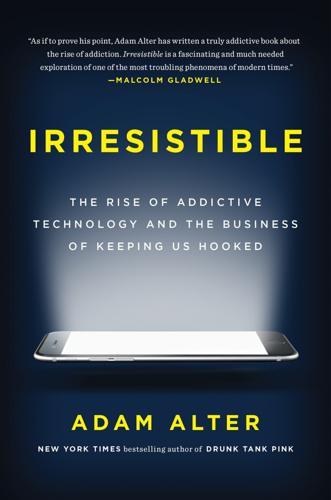
Irresistible: The Rise of Addictive Technology and the Business of Keeping Us Hooked
by
Adam L. Alter
Published 15 Feb 2017
Until recently, people left work behind when they left the office, but now, with the introduction of smartphones, tablets, remote log-ins, and emails that find us wherever we happen to be, that stopping rule is obsolete. Since the late 1960s, but especially in the past two decades, Japanese workers have whispered about karoshi, literally “death from overworking.” The term applies to workers, particularly mid- and high-level executives who struggle to leave work behind at the end of the day. As a result, they die prematurely from strokes, heart attacks, and other stress-induced ailments. In 2011, for example, the media described an engineer who died at his desk at a computer tech company called Nanya.
…
Cai, and Shirley Zhang, “Overearning,” Psychological Science 24 (2013): 852–59; Lauren F. Friedman, “Here’s Why People Work Like Crazy, Even When They Have Everything They Need,” Business Insider, July 10, 2014, www.businessinsider.com/why-people-work-too-much-2014-7; International Labour Organization, “Case Study: Karoshi: Death from Overwork,” International Labour Relations, April 23, 2013, www.ilo.org/safework/info/publications/WCMS_211571/lang—en/index.htm ; China Post News Staff, “Overwork Confirmed to Be Cause of Nanya Engineer’s Death,” China Post, October 15, 2011, www.chinapost.com.tw/taiwan/national/national-news/2011/03/15/294686/Overwork-confirmed.htm.
…
(IGN column), 178 Italian Job, The (movie), 191–92, 204 Jarecki, Andrew, 199 Jeong, Ken, 279–80 Jinx, The (real-life crime documentary), 199–200 Jobs, Steve, 1, 2, 4 John, Daymond, 279–80 Johnson, Eric, 209 Journey, 202 juice, 137–39 Just Press Play program, 304–5 Kagan, Jerome, 19–20 Kahneman, Daniel, 282 Kaiser Foundation, 245–46 Kappes, Heather, 161 Kardashian, Kim, 158 “Karma Police” (Radiohead), 195 karoshi (death from overworking), 186–87 Keas, 300–302 Kennedy, Joe, 279–80 khat leaf, 31 King, 137 Klosterman, Chuck, 109–10 Koenig, Sarah, 196, 197, 203 Kondo, Marie, 207–8 KonMari, 207–8 Kotler, Steven, 142 Kraft, Robert, 116 Krieger, Mike, 216–17 Kulagin, Mikhail, 172–73 Lancet, 296 Lantz, Frank, 164–65, 188–89, 300 Larson, Michael, 100–106 Larson, Teresa, 106 Lawrence, Andrew, 82–85 laziness, 305–6 leaderboards, 298 League of Legends (game), 228 learning, gamification of, 302–5 Lee, Hae Min, 196, 198, 200, 203 Lego, 174 Lewis, Michael, 119 Liar’s Poker (Lewis), 119 Life-Changing Magic of Tidying Up, The (Kondo), 207–8 likes/like button, 127–29, 217 Lindner, Emilee, 159 LinkedIn, 128 Litras, Janie, 103 Little Mister Cricket (game), 138–39 LiveOps, 306–7 Long, Ed, 103 Lord of the Rings (Tolkien), 305 loss aversion, 152–54 losses disguised as wins, 133–34 love, 75–78 Love and Addiction (Peele), 76 “Love Is Like Cocaine” (Fisher), 75–76 Lovematically, 128–29 Love (TV show), 212 Luckey, Palmer, 141–42 Lucky Larry’s Lobstermania (slot machine), 133–34 ludic loops, 177–79 Lumos Labs, 313 MacInnis, Cara, 265 Mad Men (TV show), 290 Making a Murderer (real-life crime documentary), 199–200 mapping, 139 marathon runners, and goal-setting, 95–97 Marks, Isaac, 76–77 Massachusetts Institute of Technology, 275 Matheus, Kayla, 282–83 Medalia, Hilla, 252 medical benefits, of gamification, 309–12 Meier, Darleen, 206–7 melatonin, 69–70 memory, and addiction, 57–60 micro-cliffhangers, 205–8 microfeedback, 136–37 Microsoft, 28–29 Milner, Peter, 52–57, 67 Miyamoto, Shigeru, 147–49, 155, 166 Mochon, Daniel, 173 Moment (app), 13–15 Morrissey, Tracie, 159 Moti, 282–83 motivated perception, 144–45 motivational interviewing, 258–62 MUDs (multiuser dungeons), 227–28 Murphy, Morgan, 48 Muscat, Luke, 164 Myst, 3 Myst (game), 178 nail-biting, 267–69 Nanya, 186 National Public Radio, 196 Nature, 312 NBC News Online, 197 Neanderthals, 30 near wins, 145–46, 181–83 negative reinforcement, 21 Netflix, 3, 199, 208, 210–12, 287–89, 291 NeuroRacer, 312 New York Times, 48, 141, 215–16 Nguyen, Dong, 42–43 nicotine, 31 nicotine gum, 267 Nintendo, 148, 171 Nixon, Richard, 47–48 no. 3 heroin, 46 no. 4 heroin, 47 nomophobia, 15 Norton, Michael, 173 O’Brien, Conan, 84, 243 obsession, 20–21 obsessive passion, 21–22 Oculus VR, 140–42 Olds, James, 52–57, 58, 67 O’Neill, Essena, 220–21 online shopping, 4 on-the-job training, gamification of, 308–9 opium, 31 optimal distinctiveness, 226 origami, 173–74 overcoming addictive behaviors, 263–92 behavioral architecture and, 273–92 distraction and, 267–73 habits and, 268–73 replacing bad routines with good, 268–71 subconscious attraction to ideas railed against and, 264–65 willpower, role of, 265–66 overworking, 186–88 pain, and gamification, 309–10 Pajitnov, Alexey, 170, 171, 172, 173 Parkinson’s disease patients behavioral addictions as side effect of drug treatments for, 82–85 overcoming small hurdles and, 93–95 Paskin, Willa, 212 passion, 21 Patrick, Vanessa, 272 Pavlok, 279–81 Peele, Stanton, 76, 77–79, 88 Pelling, Nick, 298, 306 Pemberton, John, 36–38, 273 Penfield, Wilder, 19 Penn, Hugh, 46 penny auction websites, 152–55 Peretz, Jeff, 194–94 perfectionism, 107–9 Perry, Steve, 202, 203 Petrie, Ryan, 226–27 Pettijohn, Adrienne, 103 Pfizer, 301–2 Phelps, Andy, 305 Philips Sonicare, 300 pineal gland, 69–70 Pinterest, 122 pituri plant, 31 planning fallacy, 289–90 “pleasure center” of brain, 55 points, 298, 299 Pokémon (game), 155 Pokhilko, Vladimir, 170 Polk, Sam, 118–19 Polkus, Laura, 216 Pommerening, Katherine, 41–42 Popular Science, 17 pornography, 4, 265–66 post-play, 208, 210–12 post traumatic stress disorder (PTSD), gamification as intervention for, 311–12 Powell, Mike, 100 Power of Habit, The (Duhigg), 268 Prelec, Dražen, 188 predatory video games, 155–59 Press Your Luck (TV show), 101–5 progress, 147–66 barriers to entry, lack of, 161–64 beginner’s luck and, 159–62 Dollar Auction Game, trap in, 149–52 energy systems, use of, 155–57 hooks in games and, 149–55 penny auction websites and, 152–55 positive feedback and, 158–59 smartphone delivery of games and, 164–66 proximity of temptation, 273–77 psychological response to experience of addiction, 73–75, 77–79 Pullen, John Patrick, 8 punding behaviors, 81–82 punishment, in breaking habits, 278–81 PurseForum, 207 Quest to Learn (Q2L), 302–4 Quibids.com, 152 Radiohead, 195 Rae, Cosette, 178–79, 249, 274 Raising Men Lawn Care, 307–8 rat experiments, of Olds and Milner, 52–57 readiness ruler, 259 Realism, 269–70 real-life crime documentaries, 196–201 Reddit, 122–25 red light, 69 regrams, 217 reinforcing good behaviors, 282–84 relational spending, 284 repression, 264 reSTART, 17–18, 62–63, 178, 228, 248–50, 255 reward, of habits, 268–69 Ricciardi, Laura, 199 Rift (game), 140–42 Robins, Lee, 50–52, 60, 67 Rochester School of Technology Just Press Play program, 304–5 Rolling Stone, 196 routine, of habits, 268–69 Routtenberg, Aryeh, 56–59 Rustichini, Aldo, 315 Ryan, Maureen, 203 Rylander, Gösta, 81, 84 Sacca, Chris, 140 Sales, Nancy Jo, 41–42 Saltsman, Adam, 155–56, 163–64 SAT vocabulary learning, gamification of, 296–97 Schachter, Stanley, 275–76 Schreiber, Katherine, 112–13, 115, 185 Schüll, Natasha Dow, 130, 134–35, 155, 183 Science, 168 Sedaris, David, 113–14 Self-Determination Theory (SDT), 260–62 “September” (Earth, Wind & Fire), 194–95, 196 Serial (podcast), 196–99, 200, 203, 204 Sesame Street (TV show), 247 Sethi, Maneesh, 279, 280–81 sexuality, 264–65 Shlam, Shosh, 252 shopping, compulsive, 205–8 Shubik, Martin, 149–51 Sign of the Zodiac (game), 130, 131 Sim, Leslie, 112–13, 114–15, 185–86 Simester, Duncan, 188 Simmons, Bill, 140 Simpsons, The (TV show), 145–46 Singer, Robert, 264 SiteJabber.com, 154 Sitzmann, Traci, 308–9 sleep deprivation, 68–70 Sleep Revolution, The (Huffington), 68–69 slot machines, 130–36, 183 smartphone addiction, 22 disruptive nature of, 15–16 overuse of, 13–15 Realism as treatment for, 269–70 scope of, 27–28 video games and, 164–66 smart watches, 113 Smith, Rodney, Jr., 307 Smith, Sandra, 112 SnowWorld, 309–10 SnŪzNLŪz, 278 social comparison, 118–19 social confirmation, 224–25 social interaction, 214–33 extensive online interactions at young ages, long-term effect of, 228–33 Hot or Not website and, 221–26 Instagram and, 216–17, 218 in multiuser games, 227–28 negative feedback in, 219–21 optimal distinctiveness and, 226 positive feedback in, 218–19 social confirmation and, 224–25 Sopranos, The (TV show), 201–3, 204 Space Invaders (game), 148 Spark Joy (Kondo), 208 Sperry, Roger, 19 SpongeBob SquarePants (TV show), 247 Steele, Robert, 48 Steiner-Adair, Catherine, 39, 41, 250–51 Stephen, Christian, 141 stereotypies, 84 Stern, Rick, 103 stopping rules, disruption of, 184–90 butt-brush effect and, 184 credit cards and, 188 exercise and, 185–86 overworking and, 186–88 video games and, 188–89 streaks, 115–16, 117 Strumsky, Dawn, 115 Strumsky, John, 115, 116 substance addiction, 8–9, 29–39 blurring of line behavioral addiction and, 81, 82–85 brain patterns and, 70–71 in early civilizations, 30–31 Freud’s research and experiments with cocaine and, 33–36 manufacturing process and, 31–32 Pemberton’s French Wine Coca (Coca-Cola) and, 37–38 punding behaviors and, 81–82 trial and error, discovery of drug effects by, 32 of Vietnam War veterans, 46–52 Sullivan, Roy, 111 Super Hexagon (game), 179–81 Super Mario Bros.
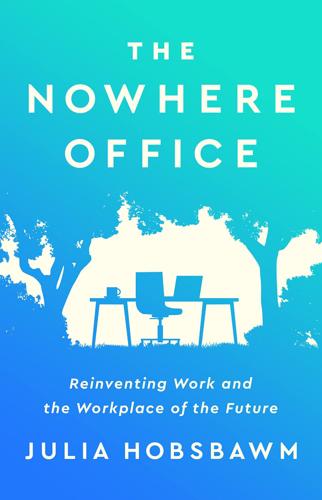
The Nowhere Office: Reinventing Work and the Workplace of the Future
by
Julia Hobsbawm
Published 11 Apr 2022
As the legendary American social historian Studs Terkel put it in his epic study Working: ‘Work is about a search for daily meaning as well as daily bread, for recognition as well as cash, for astonishment rather than torpor; in short, for a sort of life rather than a Monday through Friday sort of dying.’3 The world of work was already quite sick before the coronavirus took hold. According to the American Institute of Stress 83 per cent of American workers suffer from work-related illnesses. In South Korea the working week was reduced in 2018 because of ‘Gwarosa’ or ‘death from overwork’. The World Health Organisation (WHO) estimates that depression and anxiety alone cost the global economy $1 trillion every year.4 The pandemic lifted the lid on a desire to work differently, or less, or with more work–life balance. We can see the impact of this in every metric around work: from ‘The Great Resignation’ in which millions of American workers resigned en masse and the one in four workers who now imagine they might quit or switch jobs,5 to the reduction in corporate property rents by as much as 10 per cent with huge changes in the use of office space, co-working space and fixed-lease space.6 The city has a new competitor: the suburb.
…
See ‘Fujitsu Embarks Towards “New Normal”, Redefining Working Styles for Its Japan Offices’, 6 July 2020, https://www.fujitsu.com/global/about/resources/news/press-releases/2020/0706-01.html 59. Danielle Demetriou, ‘How the Japanese are Putting an End to Extreme Work Weeks’, BBC Worklife, 17 January 2020, https://www.bbc.com/worklife/article/20200114-how-the-japanese-are-putting-an-end-to-death-from-overwork Chapter 2: Shift 2: Worker Beings 1. Catherine Salfino, ‘Why Growth in Athleisure is the Pandemic’s Silver Lining’, Sourcing Journal, 13 August 2020, https://sourcingjournal.com/topics/lifestyle-monitor/coronavirus-athleisure-bcg-klaviyo-american-eagle-offline-aerie-npd-226232/ 2. Tom Bottomley, ‘Athleisure Orders Rise by 84% Since Start of Pandemic’, The Industry.Fashion, 17 February 2021, https://www.theindustry.fashion/athleisure-orders-rise-by-84-since-start-of-pandemic/ 3.
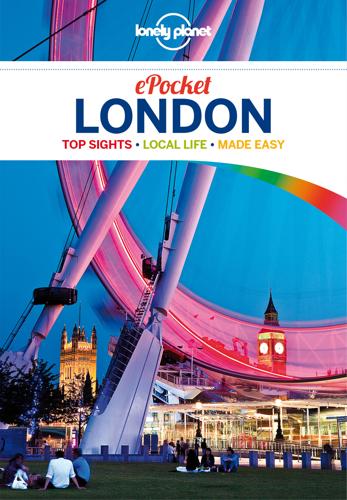
Pocket London Travel Guide
by
Lonely Planet
The current chamber, designed by Giles Gilbert Scott, replaced the one destroyed by a 1941 bomb. House of Lords The House of Lords ( 2.30-10pm Mon & Tue, 3-10pm Wed, 11am-7.30pm Thu, 10am to close of session Fri) can be visited via the ‘Strangers’ Gallery’. The intricate Gothic interior led its architect, Pugin (1812–52), to an early death from overwork. Houses of Parliament JOHN HAY/LONELY PLANET IMAGES © Tours On Saturdays and when Parliament is in recess, visitors can join a 75-minute guided tour ( booking 0844 847 1672; adult/child £15/6) of both chambers, Westminster Hall and other historic buildings. Top Tips › The best time to watch a debate is during Prime Minister’s Question Time on Wednesday, but it’s also the busiest. › To find out what’s being debated on a particular day, check the noticeboard beside the entrance, or check online at www.parliament.uk. › It’s not unusual to have to wait up to two hours to access the chambers, so give yourself time.
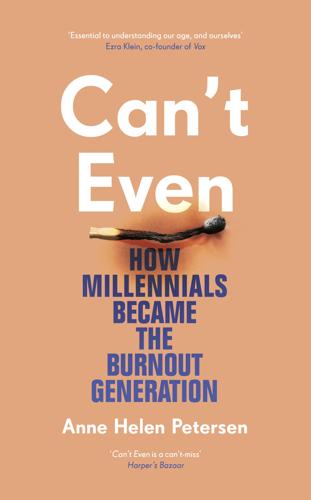
Can't Even: How Millennials Became the Burnout Generation
by
Anne Helen Petersen
Published 14 Jan 2021
Ibid, 95. 8. Jodi Kantor and David Streitfeld, “Inside Amazon: Wrestling Big Ideas in a Bruising Workplace,” New York Times, August 15, 2015. 9. Jonathan Crary, 24/7: Late Capitalism and the End of Sleep (New York: Verso, 2014), 13. 10. Jia Tolentino, “The Gig Economy Celebrates Working Yourself to Death,” The New Yorker, March 22, 2017. 11. Sarah Krouse, “The New Ways Your Boss Is Spying on You,” Wall Street Journal, July 19, 2019. 12. Ibid. 13. Ruppel Shell, The Job, 128. 14. Ceylan Yeginsu, “If Workers Slack Off, the Wristband Will Know (and Amazon Has a Patent for It).” New York Times, February 1, 2018. 15.
…
Of the full year available to working fathers, the average man took just five days.3 As Kumiko Nemoto, a professor of sociology at Kyoto University, told the New York Times, “It’s so obvious for a lot of women who have jobs that it’s very difficult to find a man who is available to be a caretaker in the family.”4 And burnout prevails: In 2017, employees at a quarter of Japanese companies were working more than eighty overtime hours, often unpaid, a month.5 Workers receive twenty vacation days of leave a year, but 35 percent of them don’t use a single day. There’s even a Japanese word—karoshi—to specifically describe death from overwork. That word came into wide use in the 1980s, as Japan was on the path to global dominance. But back then, overwork also meant lifetime security: You dedicated yourself to a job that, in turn, dedicated itself to you and your family’s long-term care. That’s no longer the case, but workers’ hours and corporate pressure remain steady.
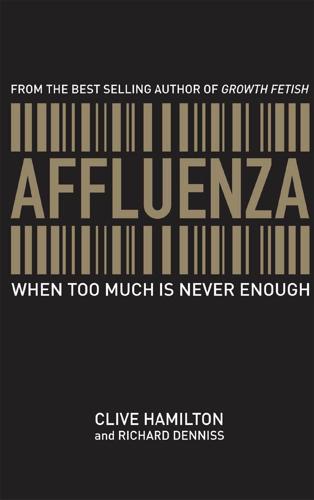
Affluenza: When Too Much Is Never Enough
by
Clive Hamilton
and
Richard Denniss
Published 31 May 2005
Superannuation fund advertisements showing couples in their golden years walking hand in hand on the beach exploit this image, yet many retirees find that after a lifetime of long working hours they have neither the relationship nor the living skills to realise the dream. Working ourselves sick Health The Japanese workplace is notorious for karoshi—death by overwork. A study of Japanese employees who had died from cardiovascular 92 OVERWORK attack found that over two-thirds had worked more than 60 hours a week, 50 overtime hours a month or more than half of their fixed holidays before their attack.15 In Australia, too, many employees are working themselves towards an early death.
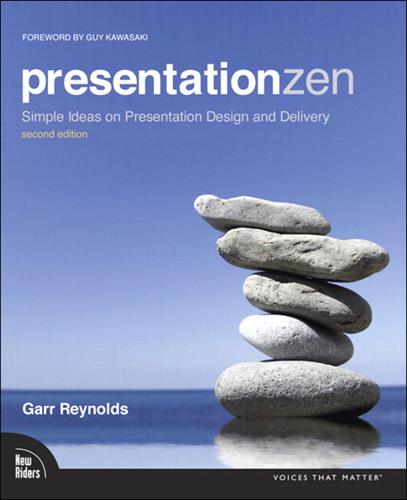
Presentation Zen
by
Garr Reynolds
Published 15 Jan 2012
Three days later, when I asked other students to recall the most salient points of the presentation, what they remembered most vividly were not the labor laws, the principles, and the changes in the labor market in Japan but, rather, the topic of karoshi, or suicide related to work, and the issue of suicides in Japan, topics that were quite minor points in the hour-long presentation. Perhaps five minutes out of the hour were spent on the issue of karoshi, but that’s what the audience remembered most. It’s easy to understand why. The issue of death from overworking and the relatively high number of suicides are extremely emotional topics that are not often discussed. The presenters cited actual cases and told stories of people who died as a result of karoshi. The stories and the connections they made with the audience caused these relatively small points to be remembered because emotions such as surprise, sympathy, and empathy were all triggered
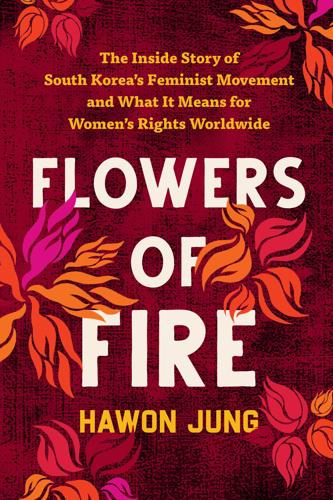
Flowers of Fire: The Inside Story of South Korea's Feminist Movement and What It Means for Women's Rights Worldwide
by
Hawon Jung
Published 21 Mar 2023
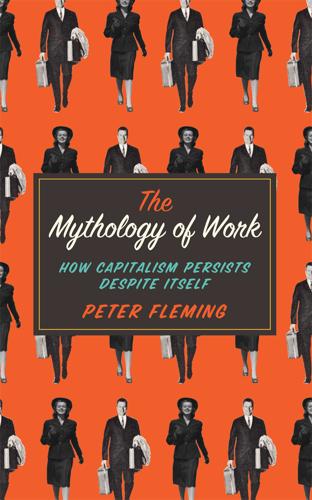
Mythology of Work: How Capitalism Persists Despite Itself
by
Peter Fleming
Published 14 Jun 2015
However, I suggest that the four deaths mentioned above do actually tell us much about how a growing number of people approach their jobs in the post-industrial workforce. Whereas our grandparents could ‘switch off’ after leaving the office, positioning it as something they did among others things, what we might call the bio-proletariat view their jobs as something they ‘are’. While suicide and death-by-overwork are extreme cases, they are indicative of an idealization of employment that affects many people, encouraging them to perceive their jobs as everything. Work has become a generalizable social insistence, an inclusive reference point that relates to everything else we do. These deadly trends say something more generally about the intentional conflation of work and life in late-capitalist societies.
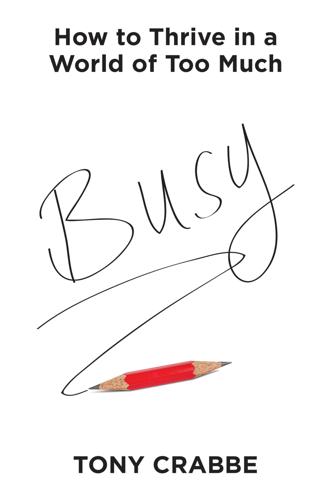
Busy
by
Tony Crabbe
Published 7 Jul 2015
We are flatlining at full speed ahead. When we don’t allow this pulsing between on and off, we fail to allow ourselves to recover. This causes an allostatic load6—best described as accelerated wear and tear on the body and brain. In Japan there is a word for the consequences of this: karoshi, which means “death from overwork.” Karoshi happens when chronic fatigue, stemming from long hours and persistent stress, lead otherwise healthy young adults to drop down dead from a stroke or heart attack. Increasing your allostatic load through constant busyness reduces your thinking power, your performance and your memory, and increases all kinds of health risks: cardiovascular disease, reduced immune system performance and early death.
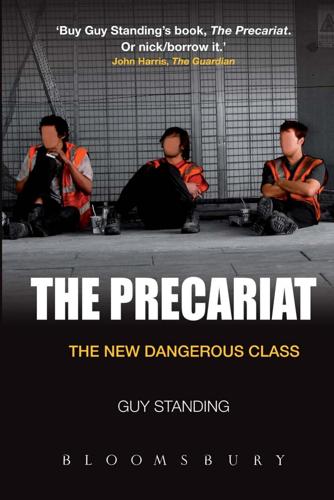
The Precariat: The New Dangerous Class
by
Guy Standing
Published 27 Feb 2011
The company became a fictitious family so that the employment relationship became ‘kintractship’, in which the employer ‘adopted’ the employee and in return expected something close to a gift relationship of subservience, filial duty and decades of intensified labour. The result was a culture of service overtime and the ultimate sacrifice of karoshi, death from overwork (Mouer and Kawanishi, 2005). But since the early 1980s, the share of the Japanese labour force in the salariat has shrunk dramatically. Those still clinging on are under pressure, many being replaced by younger workers and by women with none of their employment security. The precariat is displacing salaryman, whose pain is revealed by an alarming rise in suicides and social illnesses.
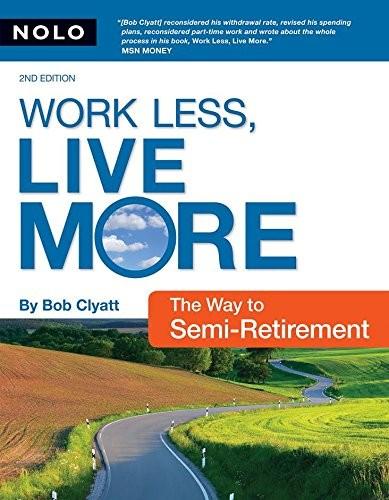
Work Less, Live More: The Way to Semi-Retirement
by
Robert Clyatt
Published 28 Sep 2007
. • Dutch, Austrians, and Swedes working more than 48 hours per week: 1% to 2% • Western Europeans working more than 48 hours per week: 5% • Americans working more than 48 hours per week: 20% • Japanese working more than 48 hours per week: 28% • Japanese dying each year from karoshi, the official term for Death by Overwork: 10,000 Sources: Jon Messenger, “Working Time and Workers’ Preferences in Industrial Countries, Finding the Balance” (Routledge Studies in the Modern World Economy, 50); and Hiroshi Kawahito, National Defense Council for Victims of Karoshi, quoted in Yomiuri Shimbun Online 50 | Work Less, Live More Slow Progress in America America has experienced various reform movements designed to make work more meaningful and empowering.
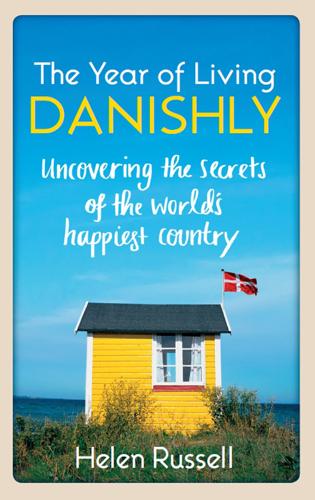
A Year of Living Danishly: My Twelve Months Unearthing the Secrets of the World's Happiest Country
by
Helen Russell
Published 14 Sep 2015
It literally means ‘happiness at work’; something that’s crucial to living the good life for Scandinavians. The word exists exclusively in Nordic languages, and hasn’t been found anywhere else in the world. By contrast, the tourists I meet on my factory tour tell me that the Japanese have their own word that sums up their country’s approach to work: ‘karoshi’, meaning ‘death from overwork’. There’s no danger of that in Denmark. Later that day, Lego Man and I are comparing diaries for the week ahead when he tells me he’ll be away for two days. ‘It’s a team retreat. We’ve got to take loose-fitting clothes and an open mind, apparently, to “explore engagement through yoga”.’ ‘Sorry?’
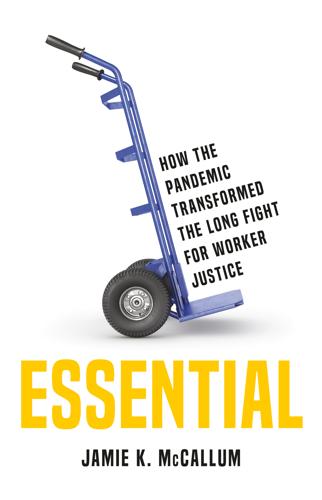
Essential: How the Pandemic Transformed the Long Fight for Worker Justice
by
Jamie K. McCallum
Published 15 Nov 2022
We should pursue policies that bring our time economy in line with our international peers by instituting generous time-off policies. Before the pandemic, we worked about six hours per week more than the French and eight hours per week more than the Germans. We even logged more work time than the perceived workaholics in Japan, who even have a word, karoshi, that means “death by overwork.” The United States has fewer paid holidays than our peers have and is the only wealthy nation without a legal right to paid sick leave, vacation time, or maternity leave. Partly for these reasons, the popularity of a four-day workweek, without a corresponding reduction in pay, gained momentum in the US and around the world during the pandemic.
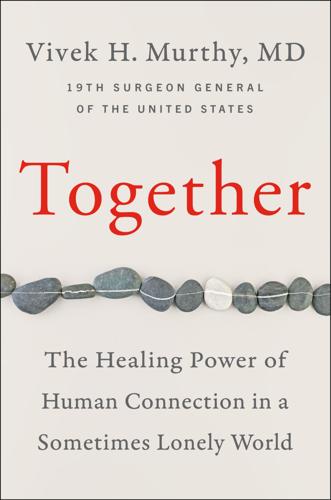
Together
by
Vivek H. Murthy, M.D.
Published 5 Mar 2020
And I would stretch my arms and yawn and pretend I was tired and say I was going to sleep, and once they were out of sight, I would pull out my project from the university and work feverishly to try to complete it.” He admits that not all work addiction is that extreme. But some cultures reward this behavior more than others. In Japan it’s common enough that there’s a special term for this condition: karōshi. It means “death from overwork.” But in America, he said, “we don’t really have a name that identifies it because of the denial in our culture.” Bryan’s denial began to crack when he started attending therapy meetings to support a family member in treatment for alcoholism. “I didn’t understand what was going on in my own situation, but it helped me start to realize that I, too, had an addictive issue.”
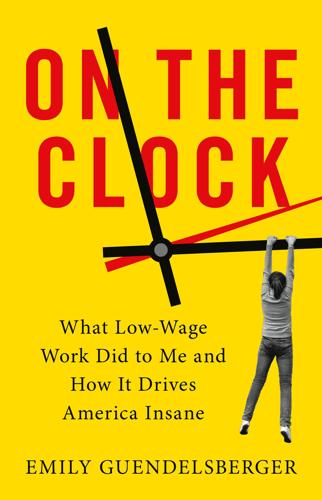
On the Clock: What Low-Wage Work Did to Me and How It Drives America Insane
by
Emily Guendelsberger
Published 15 Jul 2019
Depression and anxiety are perfectly normal reactions to the insanely stressful world we’ve built for ourselves. Suppressing our humanity is exhausting. It’s driving us crazy. It’s ruining our experience of life. It’s making us sick and terrified and cruel and hopeless. And it’s killing us. In the 1970s, Japan coined a new word—karoshi, meaning death by overwork—after businessmen in their thirties and forties started dropping dead from strokes, heart attacks, and suicide after working twenty-hour days for months at a time. Giving the phenomenon a name, starting to measure it, and imposing a nontrivial punishment on the companies driving it were the first steps in keeping karoshi from getting out of hand.
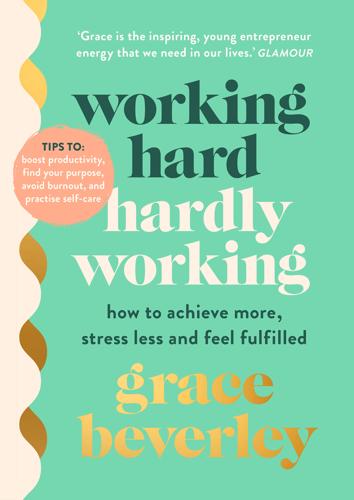
Working Hard, Hardly Working
by
Grace Beverley
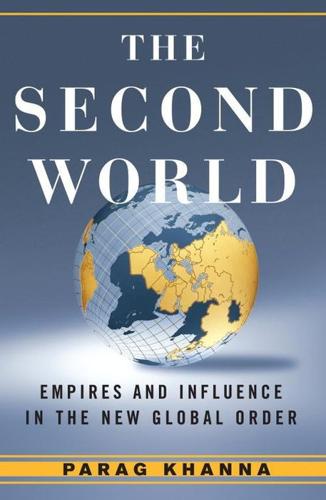
Second World: Empires and Influence in the New Global Order
by
Parag Khanna
Published 4 Mar 2008
In some areas, the government has forced urban to rural resettlement, turning workers into farmers and filling villages abandoned by urban migrants. But equally important is Wal-Mart, which has the vast majority of its goods produced in China and employs close to two hundred thousand people. But no matter whose factory or mine Chinese laborers work in, minimal rights often translate into guolaosi—“death from overwork.”26 Nonetheless, over a billion Chinese can have all the basic aspects of material welfare covered, because unlike third-world countries, they produce all those basics themselves. And with its high savings rate, China is building a mega-economy based both on mass production and consumption.
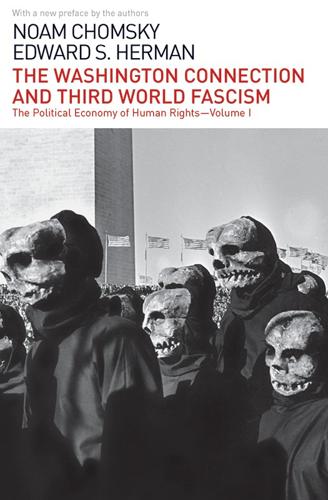
The Washington Connection and Third World Fascism
by
Noam Chomsky
Published 24 Oct 2014
Or another, showing migrant cane-cutters who work a 15-hour day (13 hours on Sunday, so that they have time for purchases at the estate owner’s shop in a nearby village) with wages so low that “90 percent of workers are victims of the debt-bondage system: debts not worked off during their lifetime are passed on to their children.” Such facts, easily documented throughout domains of the Free World, do not fall under the concept of “human rights violations” in the sense of the recent human rights campaign; to achieve this status, deaths from overwork or otherwise must be in the “right place at the right time” (see the discussion of Cambodia, volume II, chapter 6, in particular the dismay expressed by reporters over the fact that Cambodians are alleged to work a nine-hour day in cooperatives). The text of the Observer article, by Norman Lewis, explains how “the Indians of Bolivia, already exploited by a military dictatorship, will have to take up more of the white man’s burden if South African and Rhodesians accept an invitation to colonise the country” as Western civilization is driven from some of its historic conquests.
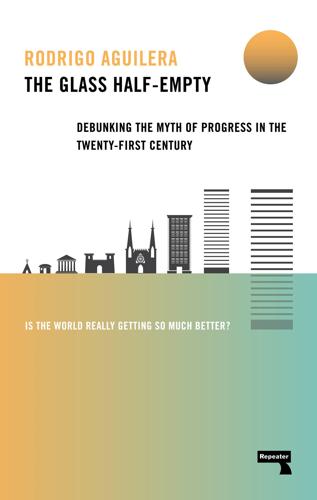
The Glass Half-Empty: Debunking the Myth of Progress in the Twenty-First Century
by
Rodrigo Aguilera
Published 10 Mar 2020
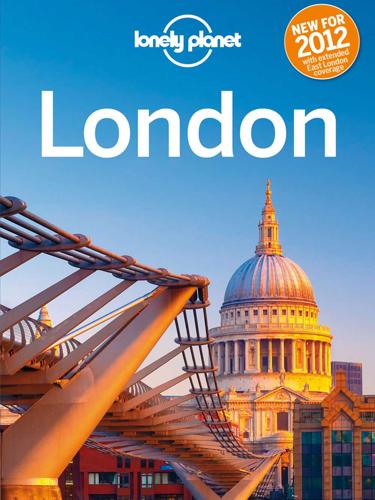
Lonely Planet London
by
Lonely Planet
Published 22 Apr 2012
During debates, MPs wanting to speak stand up to catch the Speaker’s eye. House of Lords The House of Lords ( 2.30-10pm Mon & Tue, 3-10pm Wed, 11am-7.30pm Thu, 10am to close of session Fri) is also open for visits, via the amusingly named ‘Strangers’ Gallery’. The intricate Gothic interior led its poor architect, Pugin (1812–52), to an early death from overwork and nervous strain. Most of the members of the House of Lords are life peers (appointed for their lifetime by the monarch); there is also a small number of hereditary peers and a group of ‘crossbench’ members (not affiliated to the main political parties). Tours On Saturdays and when Parliament is in recess (July to September, and then holidays around Christmas, Easter and a couple of weeks in February and June), visitors can join a 75-minute guided tour (www.parliament.uk; booking 0844 847 1672; adult/child £15/6) of both chambers, Westminster Hall and other historic buildings.
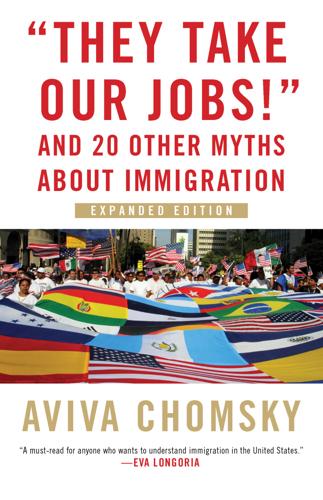
"They Take Our Jobs!": And 20 Other Myths About Immigration
by
Aviva Chomsky
Published 23 Apr 2018

Lonely Planet London City Guide
by
Tom Masters
,
Steve Fallon
and
Vesna Maric
Published 31 Jan 2010
In the 20th century, monarchs and Winston Churchill lay in state here. The House of Lords Visitors’ Gallery ( 7219 3107; admission free; 2.30-10pm Mon-Wed, 11am-1.30pm & 3-7.30pm Thu, 11am-3pm Fri) is also open for visits. Against a backdrop of peers’ gentle snoring, you can view the intricate Gothic interior that led poor Pugin (1812–52) to an early death from overwork and nervous strain. When Parliament is in recess, there are 75-minute guided summer tours ( 0870 906 3773; St Stephen’s Entrance, St Margaret St; adult/child/concession £12/5/8) of both chambers and other historic buildings. Times change, so telephone or check www.parliament.uk for latest details.
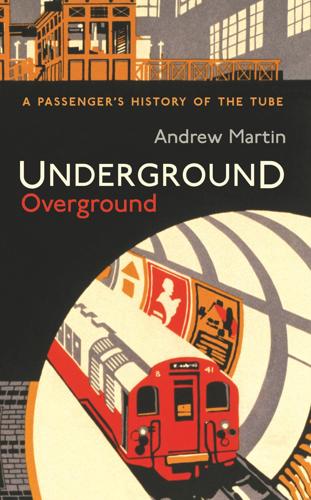
Underground, Overground
by
Andrew Martin
Published 13 Nov 2012
The city authorities considered the city too beautiful to be cluttered with subway station buildings, and it helped that the Metro is a cut-and-cover network, with no need of lift housings.) The architect of the stations on all the UERL Tube lines was Leslie Green (1875–1908), a delicate-looking man who did everything young, including dying. He’d set up in architectural practice at twenty-two; he became architect to the UERL at twenty-eight, and his early death probably came from overwork – so making him another of our Underground martyrs. He made the Yerkes Tubes assert themselves through four-square, classical buildings containing ticket offices, lifts and an arched mezzanine. These buildings are covered in glazed oxblood tiles that vie with the red of Routemaster buses for being the colour of London.
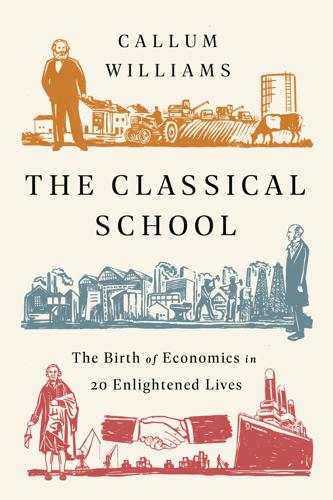
The Classical School
by
Callum Williams
Published 19 May 2020
Joseph Schumpeter notes that he “never made a mark that was at all commensurate to the importance of his achievement”. One explanation is that he was not around for long enough. As Brett Clark and John Bellamy Foster put it, “Jevons’s intellectual career bloomed for a mere 20 years due to a late start and an early death.” Perhaps because of overwork, he retired in 1880, while only in his forties. Shortly afterwards, while on holiday in Hastings, he went swimming in the sea, got caught up in a wave, and drowned. Since Jevons did not teach at one of the most important universities, he left behind no pupils who could continue his work for him.
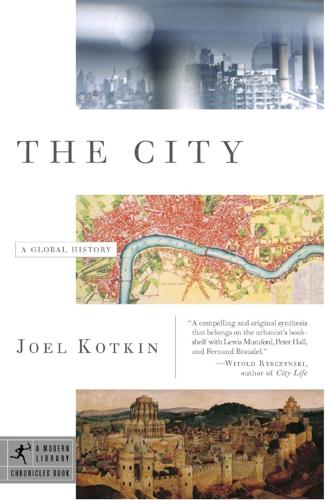
The City: A Global History
by
Joel Kotkin
Published 1 Jan 2005
One walks along a very rough path on the river bank, in between clothes-posts and washing lines to reach a chaotic group of little, one storied, one room cabins. Most of them have earth floors and working, living and sleeping all take place in one room.8 This squalor created lethal health problems. Death rates in early-nineteenth-century Manchester were one in twenty-five, almost three times that of surrounding rural hamlets. Death from disease, malnutrition, and overwork became so pervasive that factories could be kept running only by tapping a continuous supply of workers from the distant countryside and from impoverished Ireland.9 Extreme poverty in what was now easily the world’s greatest economic power, noted Alexis de Tocqueville, appeared more pervasive than in such backwaters as Spain or Portugal.10 The treatment of young children was particularly shocking.
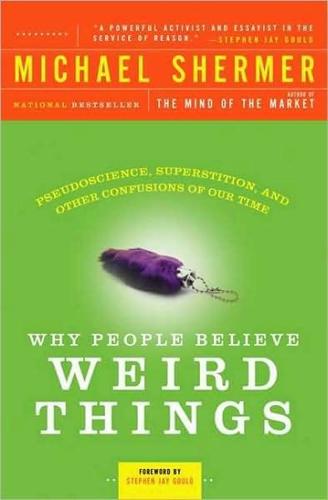
Why People Believe Weird Things: Pseudoscience, Superstition, and Other Confusions of Our Time
by
Michael Shermer
Published 1 Jan 1997

Sugar: A Bittersweet History
by
Elizabeth Abbott
Published 14 Sep 2011
While slaves cut and loaded cane, the Chinese operated the equipment and, an observer wrote approvingly, were “rapid in their movements, like a conveyor belt, tending to the apparatuses with the mathematical regularity of a pendulum.”559 Eliza Ripley, who fled postbellum Louisiana for a Cuban slave-run plantation, considered her Chinese workers “docile and industrious; they could not stand the same amount of exposure as an African, but they were intelligent and ingenious; within-doors, in the sugar factory, in the carpenter-shop, in the coopershop, in driving teams, they were superior.”560 The Chinese also gained a reputation for slyness and cruelty, and, an American visitor reported, lived “in a state of chronic sullenness.”561 Certainly they were wretched. Many took opium, ran away or committed suicide: 173 in 1862 alone. “I have seen some 20 men commit suicide,” Lin A-pang testified, “by hanging themselves and by jumping into wells and sugar cauldrons.”562 Suicide and death from despair, illness and overwork caused an annual mortality rate planters calculated at 10 percent. The Ch’en Lan Pin Commission estimated that 50 percent died during their first year of indentureship. A Chinese expatriate’s woodcut symbolizes the plight of his indentured compatriots. In a Big House courtyard, drivers bleed trussed Chinese and Indian men as crowds of others await their turn.
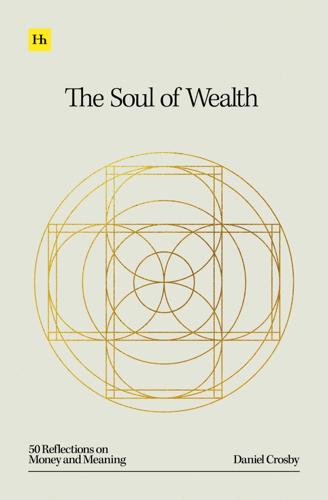
The Soul of Wealth
by
Daniel Crosby
Published 19 Sep 2024
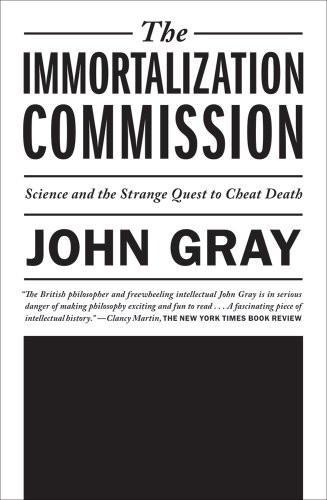
The Immortalization Commission: Science and the Strange Quest to Cheat Death
by
John Gray
Published 11 Apr 2011
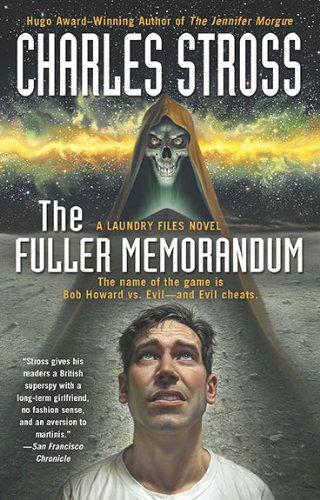
Fuller Memorandum
by
Stross, Charles
Published 14 Jan 2010
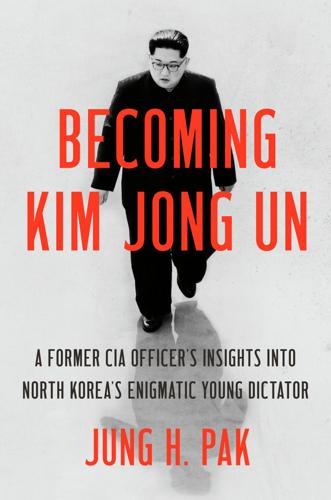
Becoming Kim Jong Un: A Former CIA Officer's Insights Into North Korea's Enigmatic Young Dictator
by
Jung H. Pak
Published 14 Apr 2020
He kept his composure, walking silently and mournfully, though his tense face and tears betrayed the real grief he must have felt. He was now, after all, an orphan; his mother had died of breast cancer when he was twenty years old. Kim Jong Il, the dictator, father, and movie impresario, would have been pleased with every aspect of this final production. * * * — Kim Jong Il’s death on December 17, 2011, from “overwork,” as the North Korean state media described it, was not a surprise. Everyone knew that Kim had health issues—he had suffered a stroke in late 2008—and that the time would probably come when his family’s history of heart disease and his days of smoking, drinking, and partying would catch up with him.
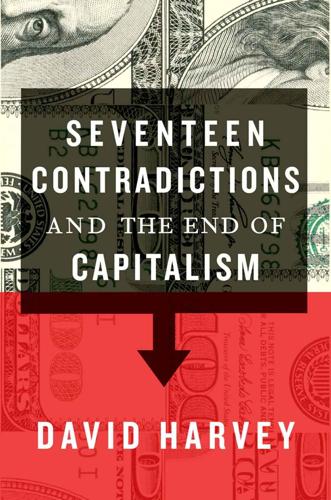
Seventeen Contradictions and the End of Capitalism
by
David Harvey
Published 3 Apr 2014
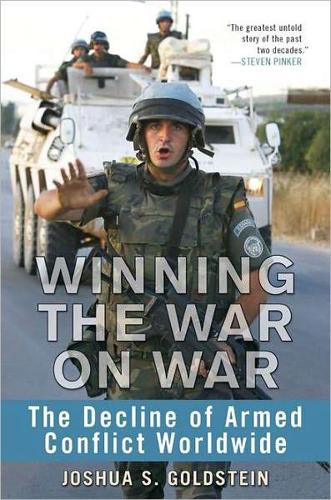
Winning the War on War: The Decline of Armed Conflict Worldwide
by
Joshua S. Goldstein
Published 15 Sep 2011
For example, the Spanish commander at the Aztec capital in 1520 “ordered the slaughter of masses of unarmed religious celebrants in the temple. The carnage was terrible.... Spaniards fell on the packed throng, cutting off arms and legs and disemboweling their victims in a slaughter that continued until virtually everyone was dead.” More deaths came about indirectly through overwork and exploitation in mines and plantations. One eyewitness, Bartolomé de Las Casas, reported, “The newborns died soon, because their mothers, because of the hardship and hunger, had no milk in their breasts. For this reason, while I was in Cuba, 7,000 children died in three months.”
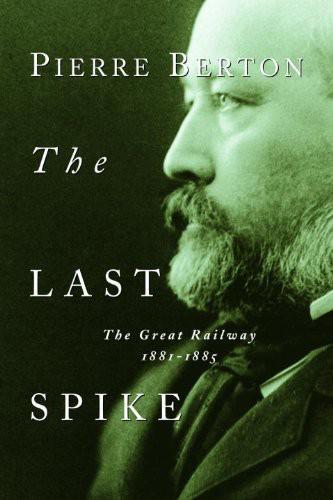
The Last Spike: The Great Railway, 1881-1885
by
Pierre Berton
Published 1 Jan 1971
In 1905 he was general manager of the New York Tunnel Company, building a subway tunnel under the east branch of the Hudson River said at the time to be one of the most difficult pieces of work ever undertaken by a contractor. He died on June 21 of that year at Oscawana-on-the-Hudson. He was fifty-six years old. The cause of death was given as “overwork.” Arthur Wellington Ross lived in Vancouver for six years following its establishment as the Canadian Pacific’s terminus – a decision in which he had had a considerable say – and is credited with obtaining the military reserve for the city as Stanley Park. He later became, for a brief period, a mining broker in Ontario.

A Place for Everything: The Curious History of Alphabetical Order
by
Judith Flanders
Published 6 Feb 2020
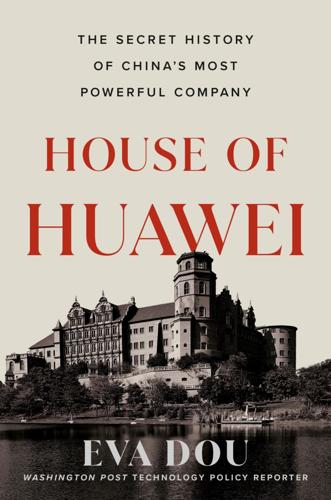
House of Huawei: The Secret History of China's Most Powerful Company
by
Eva Dou
Published 14 Jan 2025
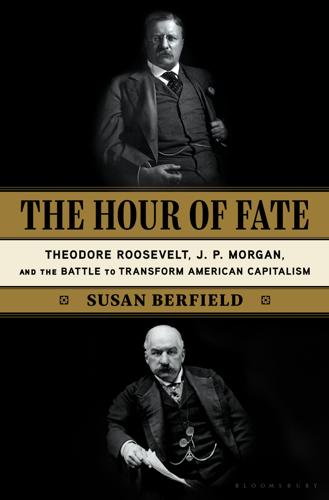
The Hour of Fate
by
Susan Berfield
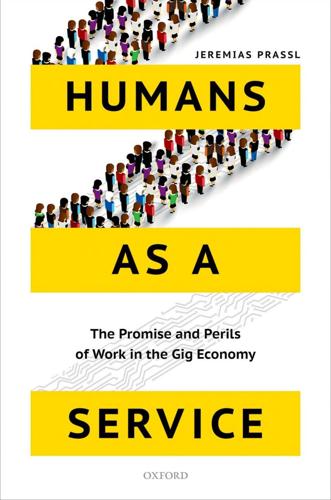
Humans as a Service: The Promise and Perils of Work in the Gig Economy
by
Jeremias Prassl
Published 7 May 2018
, Quora (undated), https://www.quora.com/Why-is-the-vehicle-leasing-program-for- Uber-drivers-so-expensive, archived at https://perma.cc/R4XL-NURP; Leslie Hook, ‘Uber hitches a ride with car finance schemes’, Financial Times (11 August 2016), http://www.ft.com/content/921289f6–5dd1–11e6-bb77-a121aa8abd95, archived at https://perma.cc/ULZ7-QGMZ * * * 166 Notes 80. Jia Tolentino, ‘The gig economy celebrates working yourself to death’, The New Yorker (22 March 2017), http://www.newyorker.com/culture/jia-tolentino/ the-gig-economy-celebrates-working-yourself-to-death, archived at https:// perma.cc/JX8G-37QX chapter 4 1. Hans C. Andersen, Keiserens nye klæder (tr. Jean Hersholt), http://www.andersen. sdu.dk/vaerk/hersholt/TheEmperorsNewClothes_e.html, archived at https:// perma.cc/Y7T2-8ML9 2.
…
Rather than worrying about the harsh working conditions we have encountered, however, some platforms publicly advertise them as a desirable feature. At its most extreme, the entrepreneurship narrative actively cele- brates (self-)exploitation. New Yorker journalist Jia Tolentino has highlighted a series of instances of ‘the gig economy celebrat[ing] working yourself to death’: It does require a fairly dystopian strain of doublethink for a company to celebrate how hard and how constantly its employees must work to make a living, given that these companies are themselves setting the terms . . . Fiverr, an online freelance marketplace that promotes itself as being for ‘the lean entrepreneur’ . . . recently attracted ire for an ad campaign called ‘In Doers We Trust’.
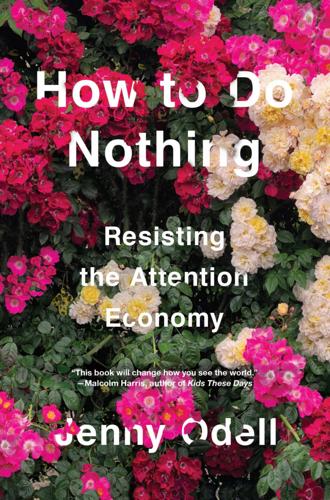
How to Do Nothing
by
Jenny Odell
Published 8 Apr 2019
Eric Holding and Sarah Chaplin, “The post-urban: LA, Las Vegas, NY,” in The Hieroglyphics of Space: Reading and Experiencing the Modern Metropolis, ed. Neil Leach (Abingdon, UK: Routledge, 2005), 190. 14. Franco Berardi, After the Future (Oakland, CA: AK Press, 2011), 66. 15. Ibid., 129. 16. Bernardi, 35. 17. Jia Tolentino, “The Gig Economy Celebrates Working Yourself to Death,” New Yorker, March 22, 2017: https://www.newyorker.com/culture/jia-tolentino/the-gig-economy-celebrates-working-yourself-to-death. 18. Cali Ressler and Jody Thompson, Why Work Sucks and How to Fix It: The Results-Only Revolution (New York: Penguin, 2008), 11. 19. Berardi, 109. 20. David Abram, Becoming Animal: An Earthly Cosmology (New York: Vintage, 2011), 128–129. 21.
…
You follow through on your follow-through. Sleep deprivation is your drug of choice. You might be a doer.” Here, the idea that you would even withhold some of that time to sustain yourself with food is essentially ridiculed. In a New Yorker article aptly titled “The Gig Economy Celebrates Working Yourself to Death,” Jia Tolentino concludes after reading a Fiverr press release: “This is the jargon through which the essentially cannibalistic nature of the gig economy is dressed up as an aesthetic. No one wants to eat coffee for lunch or go on a bender of sleep deprivation—or answer a call from a client while having sex, as recommended in [Fiverr’s promotional] video.”17 When every moment is a moment you could be working, power lunch becomes power lifestyle.
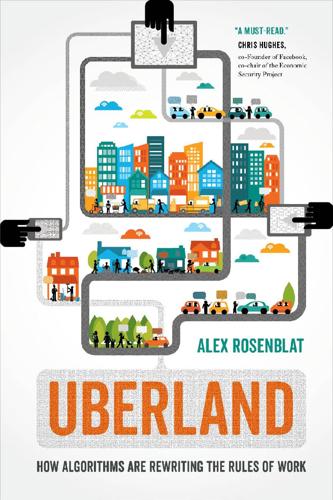
Uberland: How Algorithms Are Rewriting the Rules of Work
by
Alex Rosenblat
Published 22 Oct 2018
For ethnographic work on how working-class adults integrate these ideas into their own career and life plans, see Jennifer M. Silva, Coming Up Short: Working-Class Adulthood in an Age of Uncertainty (Oxford: Oxford University Press, 2013), particularly pp. 29–31. 66. Jia Tolentino, “The Gig Economy Celebrates Working Yourself to Death,” New Yorker, March 22, 2017, www.newyorker.com/culture/jia-tolentino/the-gig-economy-celebrates-working-yourself-to-death. 67. Elizabeth Wissinger, “Glamor Labour in the Age of Kardashian,” Critical Studies in Fashion and Beauty 7, no. 2 (December 2016): 141–152, www.ingentaconnect.com/contentone/intellect/csfb/2016/00000007/00000002/art00002. 68.
…
followed by a green Fiverr icon and the Fiverr logo, “In Doers We Trust.” Another, in the same subway car, read simply, “Reading about starting your own business is like reading about having sex,” followed by the green Fiverr icon and the same logo, “In Doers We Trust.” As the title of one New Yorker article observed, “The Gig Economy Celebrates Working Yourself to Death.”66 An Uber driver posted a link to this article in a forum with the comment “I’d still rather overwork in the gig economy than be a corporate slave tied to a desk from 9–5.” This observation affirms the thrust of the Fiverr ad profiled by the New Yorker: a beautiful woman is determined to rise above lesser mortals, who need things like lunch.
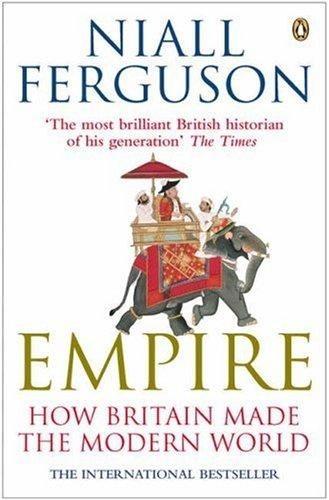
Empire: How Britain Made the Modern World
by
Niall Ferguson
Published 1 Jan 2002
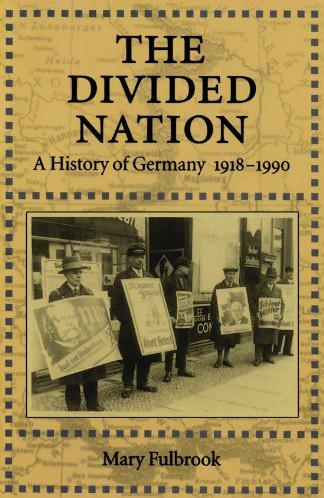
The Divided Nation: A History of Germany, 1918-1990
by
Mary Fulbrook
Published 14 Oct 1991
No written order has been found as yet, and in any case such an order from Hitler would be more likely to have been given orally, making known to associates what was 'the Führer's wish'. We shall return to the question of debates over the genesis of the Final Solution in a moment. What is clear is that by the end of 1941 death was no longer a matter of overwork, malnutrition, disease, or mass shootings. The euthanasia programme had been at least formally Page 110 terminated in response to public outcry from relatives, church people and others. But the techniques learnt on the euthanasia programme of 193941 were transported to the death camps in the east.
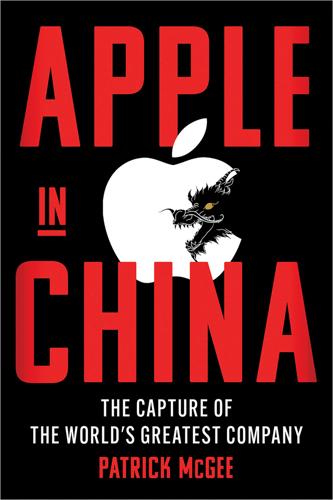
Apple in China: The Capture of the World's Greatest Company
by
Patrick McGee
Published 13 May 2025

How to Fix the Future: Staying Human in the Digital Age
by
Andrew Keen
Published 1 Mar 2018
Indeed, a July 2017 report about the gig economy by the British MP Frank Field alleges that some self-employed UK drivers are earning only £2.50 an hour working for sharing economy companies like Parcelforce and webuyanycar.com.30 “In reality, there is no utopia at companies like Uber, Lyft, Instacart and Handy, whose workers are often manipulated into working long hours for low wages while continually chasing the next ride or task,” that 2017 New York Times editorial argues.31 Or, as the New Yorker staff writer Jia Tolentino bluntly put it, commenting on the cult of work celebrated by on-demand companies such as the freelance marketplace Fiverr, “The gig economy celebrates working yourself to death.”32 My own experience as a heavy Uber user chimes with these conclusions. On my travels around the world to research this book, I’ve discussed the value of Uber with many of my drivers. Very few had anything good to say about the Silicon Valley start-up, and most admitted that they were looking for alternative ways to make extra money.
…
Diana Kapp, “Uber’s Worst Nightmare,” San Francisco Magazine, May 18, 2015. 29. “The Gig Economy’s False Promise,” New York Times, April 17, 2017. 30. Rob Davies and Sarah Butler, “UK Workers Earning £2.50 an Hour Prompts Calls for Government Action,” Guardian, July 6, 2017. 31. “The Gig Economy’s False Promise.” 32. Jia Tolentino, “The Gig Economy Celebrates Working Yourself to Death,” Guardian, March 22, 2017. 33. Chantel McGee, “Only 4 Percent of Uber Drivers Remain on the Platform a Year Later, Says Report,” CNBC, April 20, 2017. 34. More, Utopia, 82. 35. Hannah Levintova, “Meet ‘Sledgehammer Shannon,’ the Lawyer Who Is Uber’s Worst Nightmare,” Mother Jones, December 30, 2015. 36.
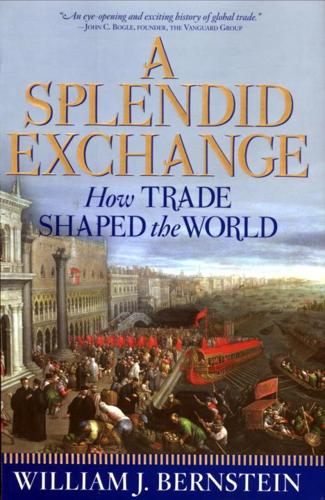
A Splendid Exchange: How Trade Shaped the World
by
William J. Bernstein
Published 5 May 2009

Greater: Britain After the Storm
by
Penny Mordaunt
and
Chris Lewis
Published 19 May 2021
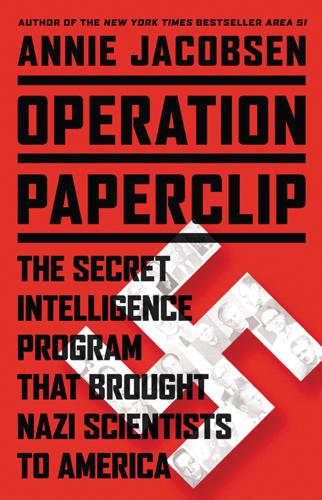
Operation Paperclip: The Secret Intelligence Program That Brought Nazi Scientists to America
by
Annie Jacobsen
Published 11 Feb 2014
Rickhey was in charge: Bundesarchiv Ludwigsburg, Georg Rickhey B-162/964; RG 330 Georg Rickhey “Statement of Work History” and “Condensed statements of my education and my activities” (March 4, 1948). typical rate of four marks: Neufeld, The Rocket and the Reich, 186. Along with slaves, writes Neufeld, the SS Business Administration Main Office supplied security guards, food, and clothing “in a manner that led to a heavy death toll from starvation, disease and overwork.” two and three reichsmarks per man: Aalmans, 12. were all present: Neufeld, The Rocket and the Reich, 228. “During my last visit to the Mittelwerk”: Ibid., 229. “Howling and exploding bombs”: Speer, Reich, 418. poison gas air locks: Author tour of Schloss Kransberg estate and interview with Jens Hermann, caretaker of the castle, August 1, 2012.

The Future Is Asian
by
Parag Khanna
Published 5 Feb 2019

The House of Morgan: An American Banking Dynasty and the Rise of Modern Finance
by
Ron Chernow
Published 1 Jan 1990
As he readily acknowledged, he was a loafer, a studious amateur in the style of a British country squire. He loved gardening, yachting, reading detective fiction—activities of a mildly sedative nature. Once, in an indolent mood, he likened his brain to a soft, overboiled cauliflower. Also, he was haunted by his father’s breakdowns, illnesses, and death, which he associated with politics and overwork. So he was ready to rely on a strong lieutenant. Jack was a great fan of Harry Davison, who seemed the clear favorite as Morgan overlord in the postwar period. Davison had natural authority; Paul Warburg of Kuhn, Loeb once said that “men enjoyed following him.”30 His dedication to the bank was exemplary, as is attested by a cable that he sent to Nelson Aldrich after Pierpont died.
…
The two men had had a close, if curiously unequal, relationship. Fummi would address him as Mr. Lamont, while Lamont would reply using the diminutive Nino. A professional hand-wringer, the sentimental, hypochondriacal Fummi had shared many trials with Lamont—his first wife’s death from cancer in 1930, several breakdowns from overwork, and arthritis. In Morgan annals of crisp business letters, Fummi’s notes stand apart as the musings of a tender, melancholic man who bared his grief in a most un-Morgan-like manner. Whether operating from the Via Veneto in Rome or a Saint-Tropez villa—made possible by his ample Morgan retainer—Fummi was always vulnerable to charges of his being a foreign agent.
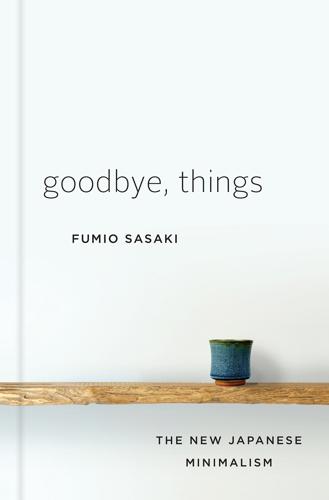
Goodbye, Things: The New Japanese Minimalism
by
Fumio Sasaki
Published 10 Apr 2017
As a result, I don’t even have to worry about retirement anymore. I’m optimistic, knowing that all I have to do is earn 100,000 yen each month. Many jobs are available today where all you need is an online connection, so you can even live someplace abroad where minimum living costs are even lower. There’s no point in putting up with a terrible job or working yourself to death just to maintain your standard of living. By having less and lowering your minimum living costs, you can go anywhere you want. Minimalism can really be liberating. Liberated from your personas We all identify with our possessions to some extent. I considered my huge collection of books, CDs, and DVDs as a part of who I was.

The Rise and Fall of the Neoliberal Order: America and the World in the Free Market Era
by
Gary Gerstle
Published 14 Oct 2022
Irwin, Miller, and Sanger-Katz, America’s Racial Divide: Charted. 22.On the new gig economy, see Sarah Kessler, Gigged: The Economy, the End of the Job and the Future of Work (London: Random House Business, 2019); Jia Tolentino, “The Gig Economy Celebrates Working Yourself to Death,” New Yorker, March 22, 2017, https://www.newyorker.com/culture/jia-tolentino/the-gig-economy-celebrates-working-yourself-to-death, accessed June 28, 2021; Nathan Heller, “Is the Gig Economy Working?” New Yorker, May 8, 2017, https://www.newyorker.com/magazine/2017/05/15/is-the-gig-economy-working, accessed June 28, 2021; Nicole Kobie, “What Is the Gig Economy and Why Is It So Controversial?”
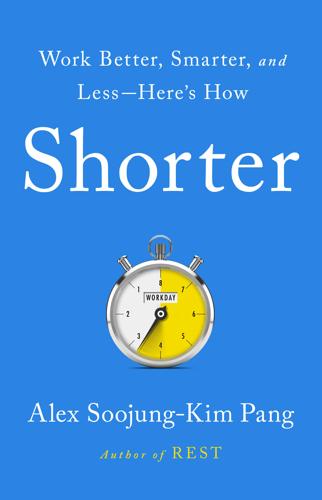
Shorter: Work Better, Smarter, and Less Here's How
by
Alex Soojung-Kim Pang
Published 10 Mar 2020
Hard-driving high-tech companies like Hyundai, Samsung, and LG helped transform this small, resource-poor, and rugged country into a global economic and cultural powerhouse. But it’s come at a cost: Koreans now work more hours per year than almost any other country in the world (only Mexicans work more). Suicide rates have tripled since 1990. The Korean language now has its own word for “working yourself to death”—gwarosa. Yet despite (or maybe because of) this history, a number of companies in Korea are experimenting with ways to shorten working hours. In 2018, in an effort to ease pressures caused by long hours, the Korean government passed legislation capping working hours at forty-eight per week.
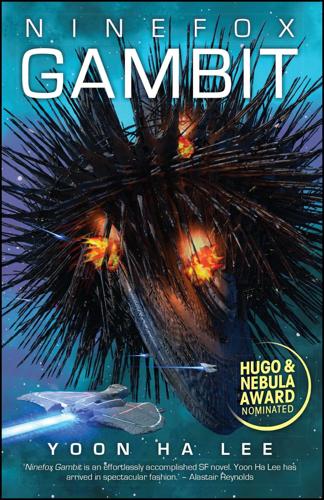
Ninefox Gambit
by
Yoon Ha Lee
Published 13 Jun 2016
Then she tried to make a dent in her paperwork. “You should take a break,” Jedao said while she was in the middle of parsing a particularly disorganized report on Medical’s preparedness. “Isn’t there something you do to relax?” “I should –” “Trust me, you’ll have plenty of opportunity to work yourself to death later. Do something fun while you can.” Cheris was dubious, but she invited some servitors to join her for a drama. A deltaform and a mothform came by, and they exchanged friendly greetings while the drama began playing. The mothform lit up in ebullient golds, magentas, and oranges every time the heroine’s sidekick, who was supposedly a Nirai, wrote so-called equations.
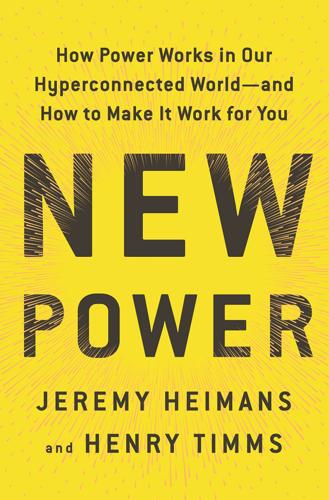
New Power: How Power Works in Our Hyperconnected World--And How to Make It Work for You
by
Jeremy Heimans
and
Henry Timms
Published 2 Apr 2018
“You eat a coffee for lunch”: Ellen Scott, “People Are Not Pleased with Fiverr’s Deeply Depressing Advert,” Metro, March 10, 2017. “The campaign positions Fiverr”: DCX Growth Accelerator, “Fiverr Debuts First-Ever Brand Campaign,” PR Newswire, January 9, 2017. “I’d guess that plenty”: Jia Tolentino, “The Gig Economy Celebrates Working Yourself to Death,” The New Yorker, March 22, 2017. With more than 24 million members: “Company Overview,” July 2017. www.care.com. “If we want to sustain”: Sheila Marcelo, discussion with authors, September 20, 2016. “Fair Care Pledge”: “Take the Fair Care Pledge Today!,” July 2017. www.faircarepledge.com.

After the Cataclysm
by
Noam Chomsky
Published 17 Dec 2014
Ponchaud writes that in some areas agricultural work was dangerous after the war “because of the unexploded bombs and shells lurking in the grass or brush.” In one region northwest of Phnom Penh, “a day never went by without several villagers being injured or killed by explosions.” Cambodia: Year Zero, p. 56. These deaths and injuries, like those from starvation, disease, and overwork caused by the killing of draught animals, are included among “Khmer Rouge atrocities” in the fanciful tabulations offered by the Western media. When he was evacuated from Phnom Penh in May, 1975, Ponchaud passed through villages where he saw “vestiges of the dreadful American air warfare.”
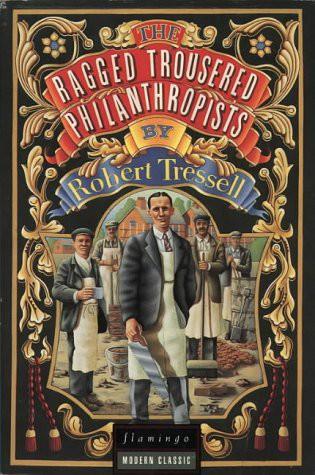
The Ragged Trousered Philanthropists
by
Robert Tressell
Published 31 Dec 1913
‘If it were proposed to make a law that all working men and women were to be put to death––smothered, or hung, or poisoned, or put into a lethal chamber––as soon as they reached the age of fifty years, there is not the slightest doubt that you would join in the uproar of protest that would ensue. Yet you submit tamely to have Penal Servitude and Death your life shortened by slow starvation, overwork, lack of proper boots and clothing, and through having often to turn out and go to work when you are so ill that you ought to be in bed receiving medical care.’ Easton made no reply: he knew that all this was true, but he was not without a large share of the false pride which prompts us to hide our poverty and to pretend that we are much better off than we really are.
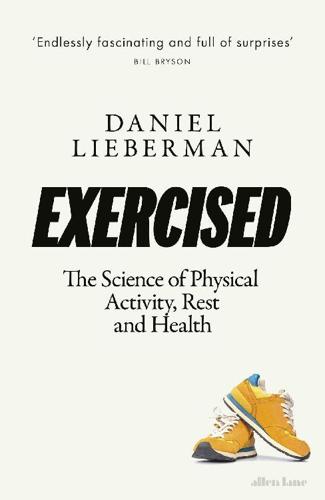
Exercised: The Science of Physical Activity, Rest and Health
by
Daniel Lieberman
Published 2 Sep 2020
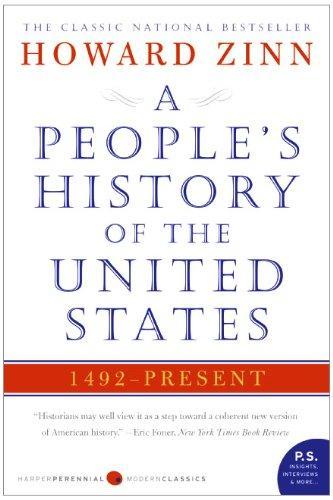
A People's History of the United States
by
Howard Zinn
Published 2 Jan 1977
That day, in front of the McCormick Harvester Works, where strikers and sympathizers fought scabs, the police fired into a crowd of strikers running from the scene, wounded many of them, and killed four. Spies, enraged, went to the printing shop of the Arbeiter-Zeitung and printed a circular in both English and German: Revenge! Workingmen, to Arms!!! . . . You have for years endured the most abject humiliations; . . . you have worked yourself to death . . . your Children you have sacrificed to the factory lord—in short: you have been miserable and obedient slaves all these years: Why? To satisfy the insatiable greed, to fill the coffers of your lazy thieving master? When you ask them now to lessen your burdens, he sends his bloodhounds out to shoot you, kill you!
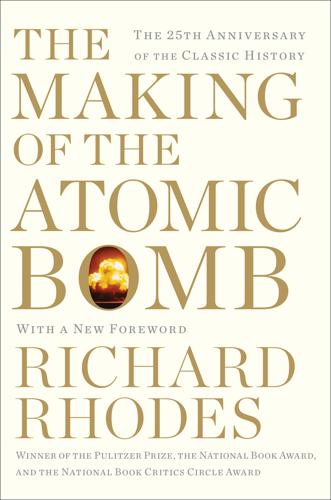
The Making of the Atomic Bomb
by
Richard Rhodes
Published 17 Sep 2012
It consisted of nausea, vomiting, and loss of appetite; diarrhea with large amounts of blood in the stools; fever and weakness; purple spots on various parts of the body from bleeding into the skin . . . inflammation and ulceration of the mouth, throat and gums . . . bleeding from the mouth, gums, throat, rectum, and urinary tract . . . loss of hair from the scalp and other parts of the body . . . extremely low white blood cell counts when those were taken . . . and in many cases a progressive course until death.2686 Only gradually did the few surviving and overworked Japanese doctors realize that they were seeing radiation sickness; “atomic bomb illness,” explains the authoritative Japanese study, “is the first and only example of heavy lethal and momentary doses of whole body irradiation” in the history of medicine.2687 A few human beings had been accidentally overexposed to X rays and laboratory animals had been exposed and sacrificed for study but no large population had ever experienced so extensive and deadly an assault of ionizing radiation before.
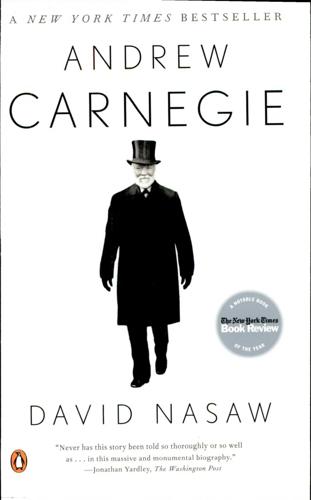
Andrew Carnegie
by
David Nasaw
Published 15 Nov 2007
Have been thinking that you should take a holiday after the year starts. A trip to Italy for instance, could not fail to keep you interested…. I hope you and your family will come with us after January for a trip to Italy. Think it over.”37 On September 9, having no response from Frick, Carnegie tried again. “Do not work yourself to death, and do arrange to take that trip abroad that I spoke of.”38 Frick continued to work like a demon. That winter, he moved his family to New York City and commuted regularly to Pittsburgh. His wife was pregnant again and expecting in August, close to the anniversary of Martha’s death. DESPITE his concern for Frick, Carnegie was in a particularly euphoric mood.